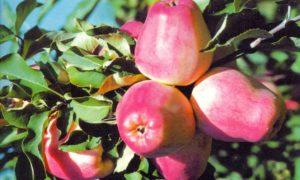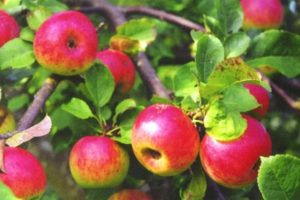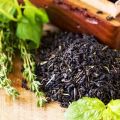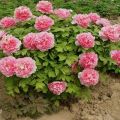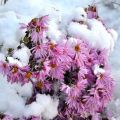How to properly prepare young apple trees for winter and why cover, materials and step-by-step guide
In winter, the apple tree continues to grow at a slow pace. Therefore, it is important to protect it from frost and pests. Every summer resident should take care of the plant and carry out the correct preparation of apple trees for winter. Even frost-resistant varieties need to be covered for the cold period to protect them from rodents. They begin to prepare in advance, before the onset of frost.
Why cover young trees?
Many summer residents are sure that the plant is covered for the winter so that the apple tree is not damaged by frost. But this opinion is wrong. First of all, it is protection from rodents, which like to feast on young bark in winter. It is also a good protection from cold winds that dry out the bark excessively and from the spring sun, which causes burns. Therefore, a shelter is a mandatory autumn event, which is carried out before the onset of frost.
Young trees are at risk of drying out by winter winds and sun. Therefore, they provide shelter not only for the trunk, but for the entire crown. Burlap is ideal material for this purpose.From the age of 7, the plant does not so badly need protection for the winter period in the form of a covering material.
When do you need to cover apple trees?
The main condition is to choose the right time for cover. The health and life of culture depends on him. Warming too early will provoke the growth of shoots, which will inevitably lead to the death of the tree. The protection is erected when the sap flow is completely completed and the temperature is -10 ° C. Before covering the plant, it is properly prepared.
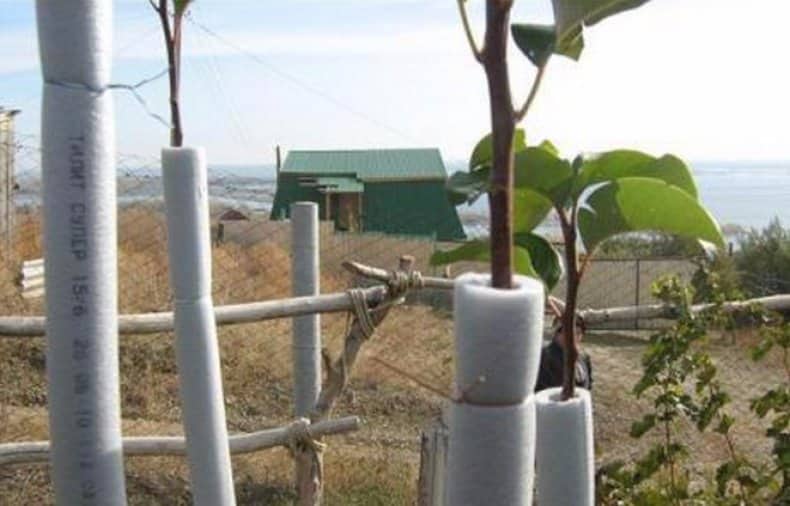
Preparation for the process
In cold regions, varieties grow well that withstand the cold. If frosts last for several days, then they will not bring strong harm to plants. Roots located close to the soil surface and weak basal branches may only slightly suffer. But hungry hares can severely damage plantings. Therefore, before sheltering, it is necessary to decide for what purpose this is being done.
A timely and securely covered bark is an important condition for the development and growth of a culture. Such a shelter is especially necessary for a young culture, since damaged bark causes diseases that lead to the death of the tree.
Every gardener should know how to prepare a plant for wintering. A number of activities are carried out before the shelter:
- Fallen leaves are removed around the plant. It is a breeding ground for bacteria and insects. It must be burned to prevent the infection from multiplying.
- From lichen, the culture is treated with copper sulfate.
- Remove rotten fruits that lie around the tree and hang from the branches.In apples, larvae overwinter, which, with the onset of heat, begin to damage the tree.
- To destroy beetles and various dangerous insects, the trunk circle is dug up.
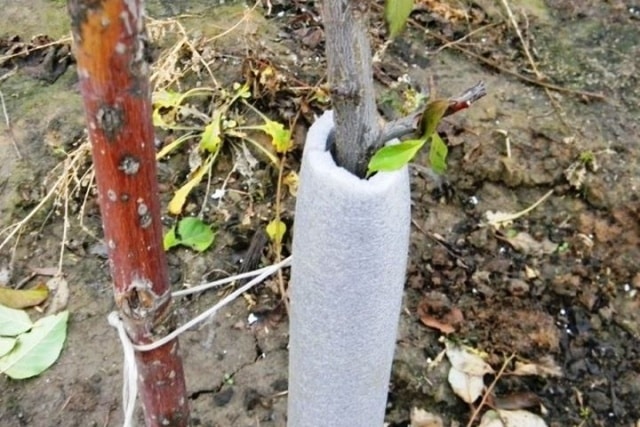
If a hunting belt was installed on the tree for the summer period, then it is removed before wintering. Beneficial insects and ladybirds must be released. You can hang a feeder on a tree, in which tits are fed in winter. Birds will help kill pests.
Necessary materials
There are many materials suitable for barrel wrapping:
- reed;
- nylon stockings;
- old rags;
- toilet paper;
- spruce forest;
- plastic bags;
- cellophane;
- several layers of newspaper.
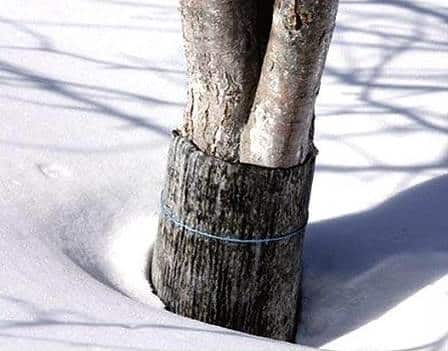
It is not recommended to use straw from a grain crop, which attracts rodents to the tree. Also, do not use wire, as it injures the bark of the plant. You can insulate trees with plastic bottles. They will qualitatively close the stem and root neck, perform the function of scaring off, since the bottles make noise from every breath of the wind.
The insulation is removed after the snow melts. If the plant is covered with roofing material, then it is removed with the onset of the first thaw.
Insulation technology
The seedlings and their root system are completely covered. Wind poses a great danger to them. It is recommended to dig in a peg next to it and tie the plant. It is also advisable to put a barrier around in the form of dry branches, which will hold back the wind. And the snow that has fallen will serve as additional protection against freezing.
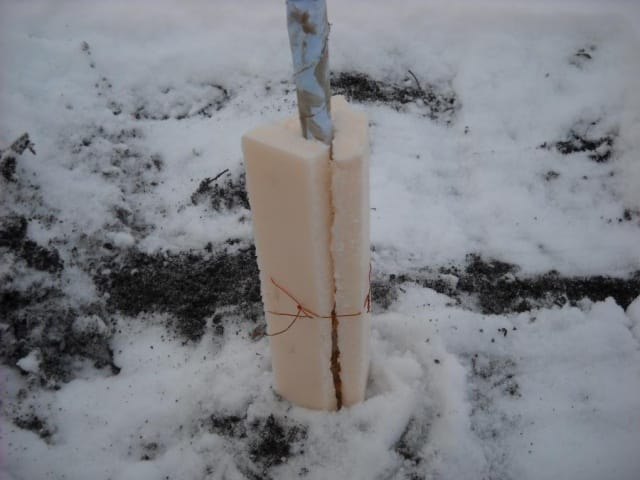
It is imperative to cover the seedlings. Damaged bark will lead to cracking and disease, and rotten frozen roots will cause the plant to die. This is taken into account when insulating all varieties.A young apple tree is covered with a layer of sawdust around the trunk. This will serve as a good protection against root freezing. Then the trunk is insulated with burlap. Spruce branches are laid on top, which will protect the plant from pests.
Sanitary pruning
Before the winter period, diseased and dry branches are cut. Lives are recommended to be shortened by a third. The cut is made at an acute angle with a well-sharpened tool. A pruner or a hacksaw is suitable for these purposes. The place of the cut is coated with garden pitch. Damaged branches are completely cut off, hemp cannot be left. The tree is shaped like a bush and left to a maximum height of 3 meters.

Treatment against diseases and pests
After all the debris has been removed around the trunk circle, it is necessary to treat the plant with a solution of vitriol. It can be sprayed with both iron and copper. This will help protect the apple tree from possible diseases and the spread of insects.
Cleaning and whitewashing the trunk
Be sure to cover the trunk with a lime mortar. The branches of the first row are also coated. This event is important because:
- Serves as protection against pests. With a prolonged and warm autumn, some insects can activate and begin to defeat the culture.
- The tool will help prevent frost cracks that appear from sudden temperature changes;
- If you add fungicides to the composition, then the solution will contribute to the fight against diseases and stem pests wintering in the bark of the plant.
- Lime will protect the crop in early spring from the first scorching sun.
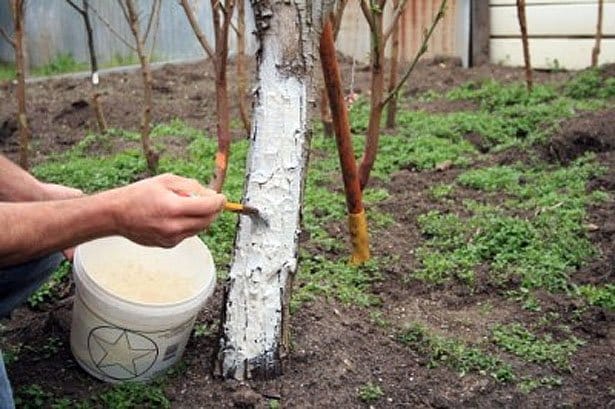
Before proceeding with whitewashing, prepare the trunk. They rid him of moss, dead bark and lichen. Before proceeding with the cleaning of the trunk, a tarp is spread around, on which organic residues will be poured. The procedure is carried out in calm, dry weather. The air temperature should be + 2 ... + 3 ° С. The collected dust is burned. After the whitewash dries well, you can apply insulation to the stem.
Top dressing and water charging irrigation
Be sure to carry out sub-winter watering. By the autumn period, the green branches have already become lignified, an excess of moisture will not provoke their growth. Depending on the soils for one apple tree add 30-40 buckets of water. The soil should be saturated with liquid by at least 1.5 meters.

Watering is necessary to provide the root system with moisture for the whole winter, which will allow the roots not to freeze. Well distributed moisture will prevent cracking of the soil, which eliminates the risk of frost penetration to the roots. Potassium-phosphorus fertilizers play an important role, contributing to the maturation of wood. Superphosphate or potassium salt is added at the time of loosening the soil around the trunk.
Rodent protection
In the fall, it is required to shelter the bole for the winter from rodents who like to feast on the bark. The ideal option is a spruce forest. Sharp needles will scare away animals and keep the bark intact. Hares mainly damage trees. Due to their height, they cannot nibble plants high. Therefore, they protect the bole and branches located at a low height. Roofing material is often used. This material will protect against pests, warm in winter and save from sunburn.
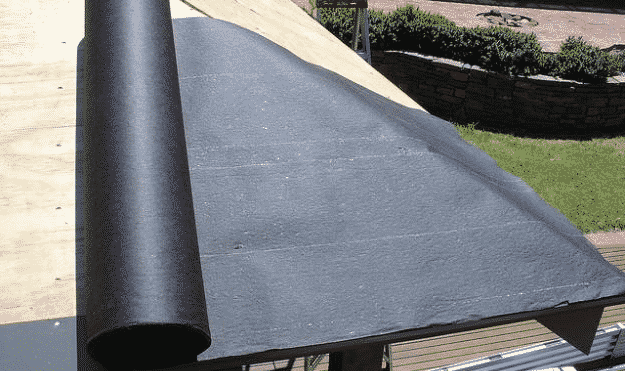
Does the variety affect the shelter
Frost-resistant varieties from 7 years old do not need to be insulated. This only applies to plants with strong bark that is free of damage and signs of disease. Such a tree can easily withstand frost. The ground part of the trunk without special shelter can withstand frost down to -35 ° С.
But the columnar apple tree should be covered especially carefully. It does not depend on her height and age.
The plant does not have long branches around the central shoot, so it should be covered completely. To do this, a pyramid of wooden planks is assembled around the plant. Humus is poured inside. And the pyramid is wrapped in tarpaulin. Such protection will help the culture survive the frost.
Features in different regions
In Siberia and the Urals, special varieties are grown that endure severe frosts. Nevertheless, apple trees are recommended to be covered for the winter. In Siberia, the trunk is insulated by 1.5 meters. Fabric or needles are used as shelter. Fix the top with tape. This helps protect the crop from sunburn, cold, and rodents.

Roots are covered in the Urals. To do this, use:
- sawdust;
- peat;
- manure.
A mound is made around the trunk about 30 centimeters high. Seedlings in cold regions should be covered completely in late fall. In winter, snow is thrown over the plant and tamped, which serves as additional protection from frost. In the Moscow region, they diligently prepare the culture for wintering and observe all the necessary conditions, since severe weather conditions are possible, which are characterized by sharp temperature changes.
For insulation, the following conditions are met:
- Loosens the soil around the plant.
- Seedlings spud. The hill should be 30 centimeters long.
- The trunk circle is mulched with sawdust. The layer thickness is about 30 centimeters. This will serve as a reliable protection of the root system from severe frosts.
- The trunk is insulated with a covering material.
- Snow is thrown over and tamped around the plant. The bigger the slide, the better.
Compliance with the listed procedures for preparing the plant for wintering will help preserve the tree and maintain its health, which will contribute to a good harvest next season.
